Our wake-up-call Howler Monkeys

The creepy roars of the Howler Monkeys (the world’s LOUDEST land animal!) are a super-reliable wake-up call for the residents of Costa Ballena. With the break of dawn, long before the sun peeks above the horizon, the Howler Monkeys begin their daily performance. Their calls can carry well over 3 miles or 5 kilometers so it is no wonder than no on escapes their morning announcements!
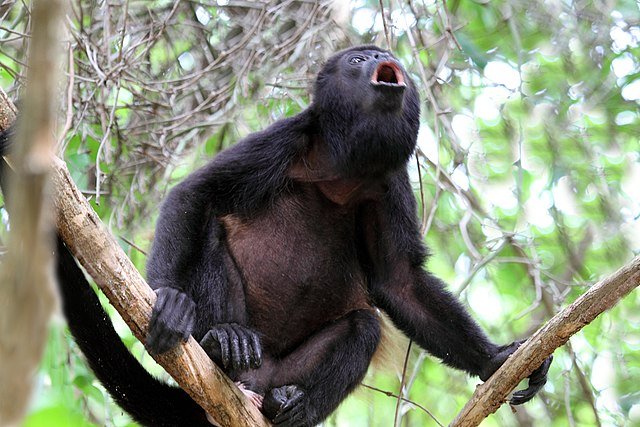
WHY ARE THEY SO LOUD?
Howler Monkeys eat a diet consisting mostly of leaves – and because leaves are low-energy and hard to digest, the monkeys spend most of their day either eating or resting, not unlike the sloth. In fact they sleep through the whole night and 75% of the day! So the loud howling has developed as an energy saving device as it is especially helpful in locating other packs of Howlers and making sure that a safe distance is kept. This is the main reason for the early morning and late evening calls. Often three or four separate groups can be heard roaring from every direction.
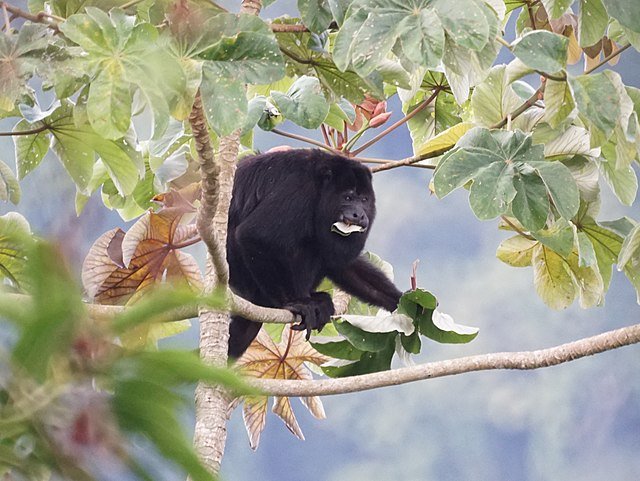
The monkeys tend to be especially vocal when they find good feeding sites – in effect, advising other troops to stay away from the fruit trees. Some evidence suggests the roars are may also be used to guard their mates from rivals.
Males are responsible for most of the loud calls – the females calls are rare and generally a higher pitch and lower volume as compared to the males.
HOW DO THEY PRODUCE THE LOUD HOWLS?
Their hollow basihyal or hyoid bone, located just under the chin, is enlarged – this bone greatly amplifies the howls and allows them to carry for many kilometers over the overpowering and chaotic jungle sounds. The bone is 25x larger than in other monkeys of similar size!
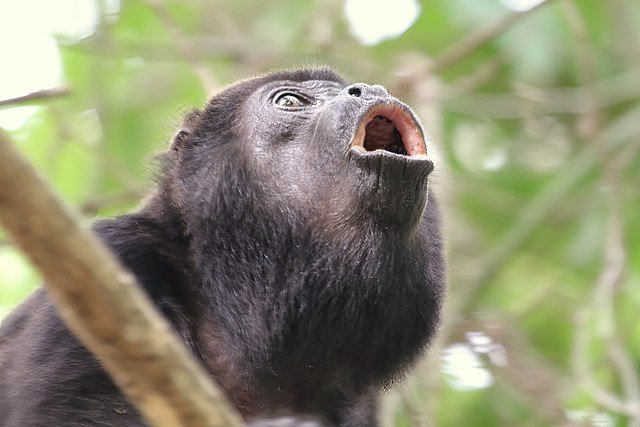
The roars can register at 140 decibels, making the Howlers the loudest land animals. This level of sound can be compared to the proximity a jet taking off, a high caliber rifle shot, or a close thunderclap.
COSTA RICA’S MANTLED HOWLERS
Fifteen species of Howler Monkeys inhabit the area between Mexico and the amazon rainforest, where most of the species can be found. But only one specie (consisting of three subspecies) calls Costa Rica home – the Mantled Howler Monkey, so named due to its long guard hair. These hair run along the sides of the monkeys’ bodies giving them a unique appearance of wearing the kind of cloak, or mantle, that was worn by ancient Greeks, Romans, Barbarians and many other cultures. The Mantled Howler can be found all over Costa Rica, with exceptions for the high mountain areas.

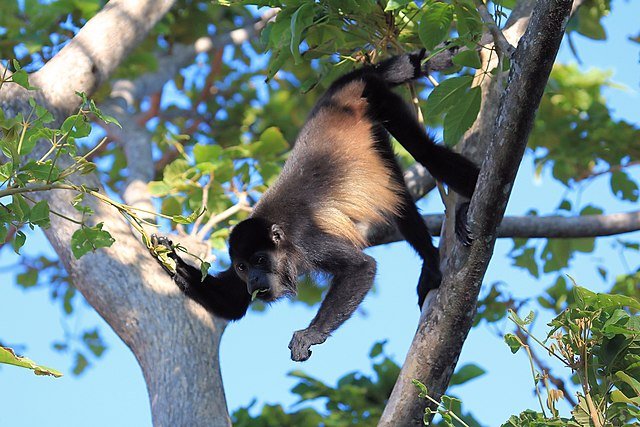
The two local subspecies of the Mantled Howler are the Ecuadorian Mantled Howler and the Golden Mantled Howler – the main difference being that the Ecuadorian subspecie is a bit paler, with the mantle being more of a dry yellowish color vs the Golden Mantled Howler’s richer, golden cloak. The only other subspecie, the Mexican Howler Monkey, is not found in Costa Rica.
APPEARANCE & CHARACTERISTICS
Mantled Howlers are predominantly black except for the golden or tan guard hairs along their sides. They are one of the largest monkeys in the new world with males typically weighting in at 5 – 10 kg and females slightly smaller. Body length excluding tail is typically in the range of 50-70cm or 20-27 inches. An interesting way to tell a male Howler is mature is by noting if the scrotum has turned white.
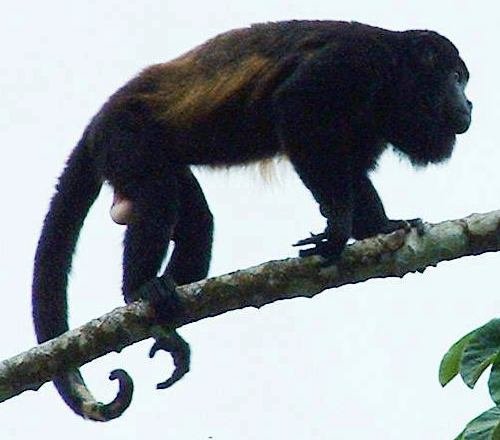
HOWLER MONKEY GODS?
Yes! The Mayans worshipped the Howler Monkey God as a major deity, overseeing artisans, scribes and sculptors. The monkey patrons were represented in pairs, often in the act of writing books or carving human heads. In the Aztecc calendar the Howler represents the 11th day, which is devoted to the arts. Mayans see the Howler as personifying the calendar’s day unit, connecting the animal to calendar reckoning, divination, and historical and ritualistic knowledge.

SOCIAL STRUCTURE
Howlers live in troops of 10-20 monkeys, but sometimes as many as 40 are present. A troop usually consists of 1-3 adult males, 5-10 adult females, and a few juveniles all lead my an alpha male. Males outrank females, and interestingly younger monkeys outrank older ones – the ranking is used when it comes to being offered the best food and most comfy nesting sites. The alpha male has the top choice of mates.
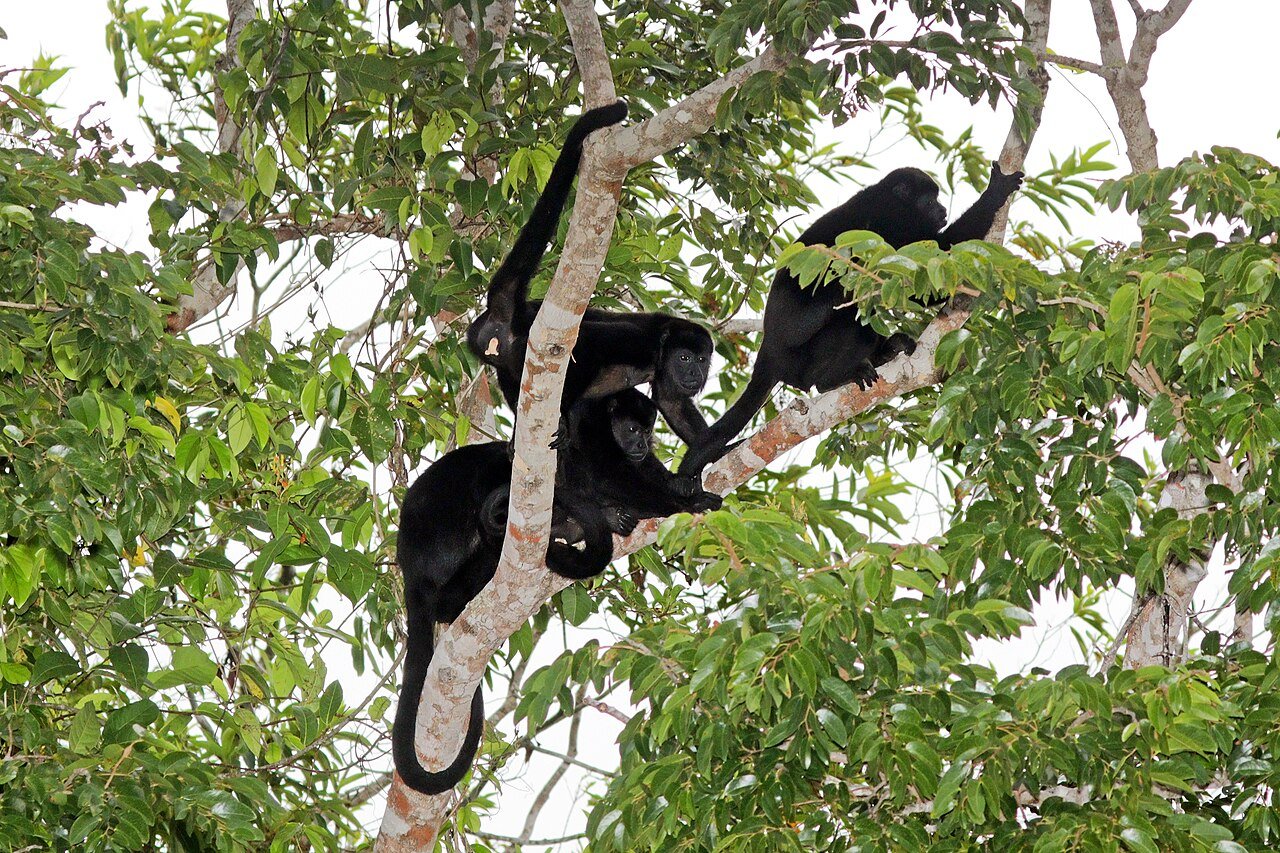
A troop is made up of mostly unrelated individuals – this is because both males and females leave their home group before reaching sexual maturity. This keeps the gene pool fresh. The homeless youngsters wonder around looking for a new pack to join. Often they make camp near the homes of Costa Ballena residents who are then bestowed a front row seat to the noisy concerts and, often, close visits and downright thievery. The youngsters are very curious and will watch local homeowners for days or weeks.
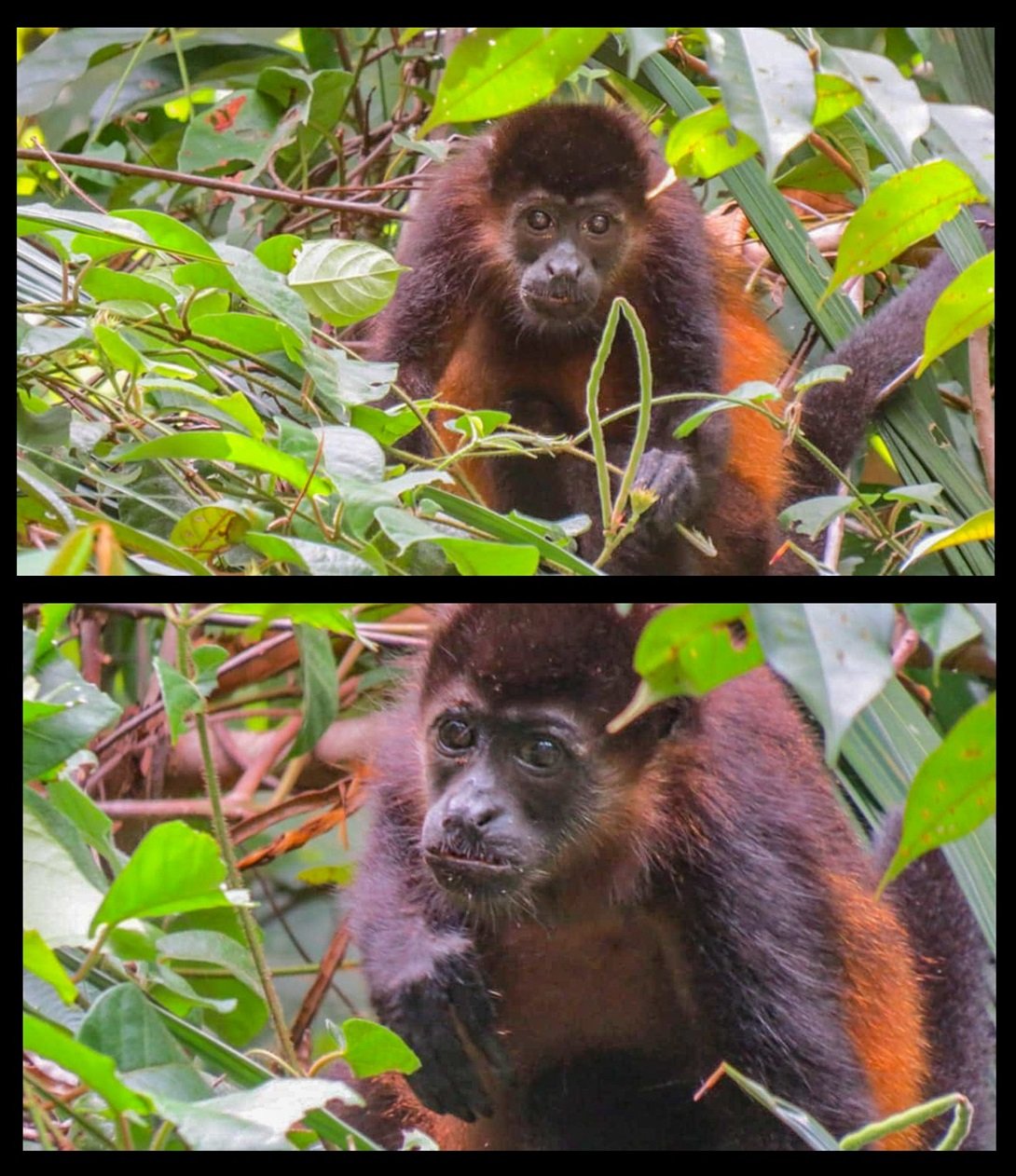
Each troop occupies a territory of between 25 and 150 acres, with numerous troops sharing overlapping part of their range. However, if troops meet each other an aggressive scuffle usually ensues.
Howlers have interesting relations with the Capuchin monkeys – while often the two species may feed on the same tree with their youngsters playing together, at times the much smaller Capuchins may become aggressive towards the Howlers – but it is rarely the other way around! Capuchins have been documented to hunt and feed on young Howlers.
BREEDING
Usually an alpha male leads the troop for 2-3 years, mostly monopolizing breeding opportunities and fathering 20 or so children – although lower ranked males may get an opportunity to mate as well. Infants are born silver but darken into the black-and-gold outfit within the first 3 weeks of life. They cling to their mother’s chest for the first 2-3 weeks after which they move onto her back. By 4-5 months, the young monkey is generally self-sufficient.
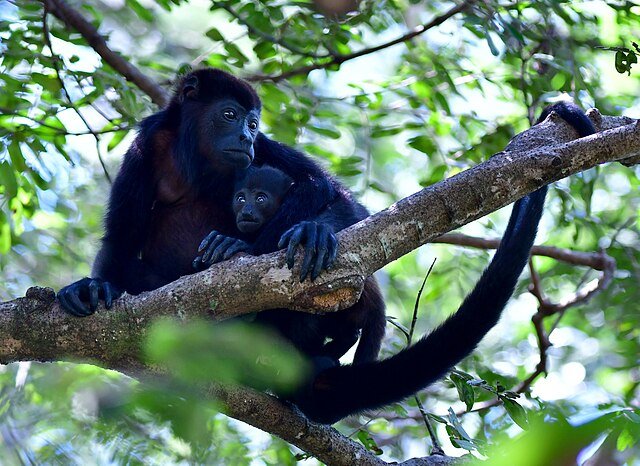
DIET
Howlers are folivores meaning they love leaves – in fact 50 to 75% of their diet consists of leaves belongings to many species of plants. They prefer to eat younger leaves – this is thought to be so because older leaves have a higher accumulation of potentially toxic chemicals. Younger leaves are also more nutritious and much easier to digest. Howlers are the only folivorous monkeys in the Americas.
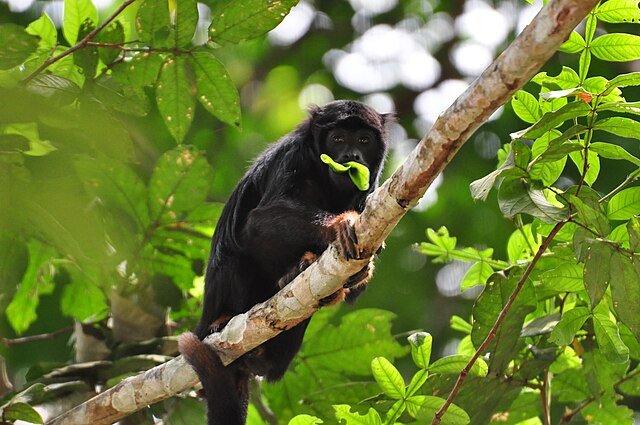
Other then leaves, fruit are often eaten and when the season hits fruit can become a major component of the Howlers’ diet, at least for a while. The monkeys love the leaves and fruit of the Ficus trees. They are seen as major seed dispersal agents since over 90% of seeds pass through their digestive system unharmed. During the dry season flowers can make up a large part of their diet as well.
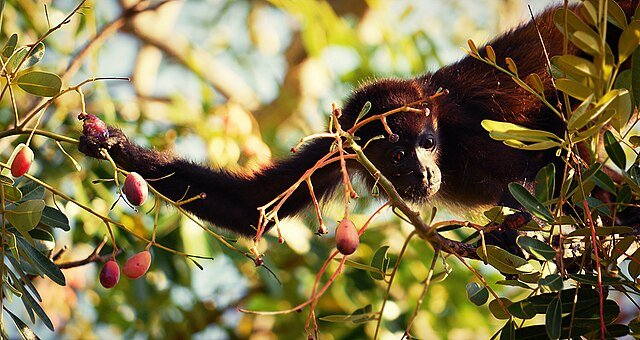
RANGE AND CONSERVATION STATUS
The Golden Mantled Howlers live in Guatemala, Honduras, Nicaragua, Costa Rica and Panama. They are not under any threat.
The Ecuadorian Mantled Howler ranges from Costa Rica to Panama, Colombia, Ecuador and Peru. This sub specie is considered to be threatened.
Generally, Howlers are adept survivors – because they require a small territory and their diet includes a variety of leaves, they are able to cope with habitat destruction and fragmentation much better than other monkey species.
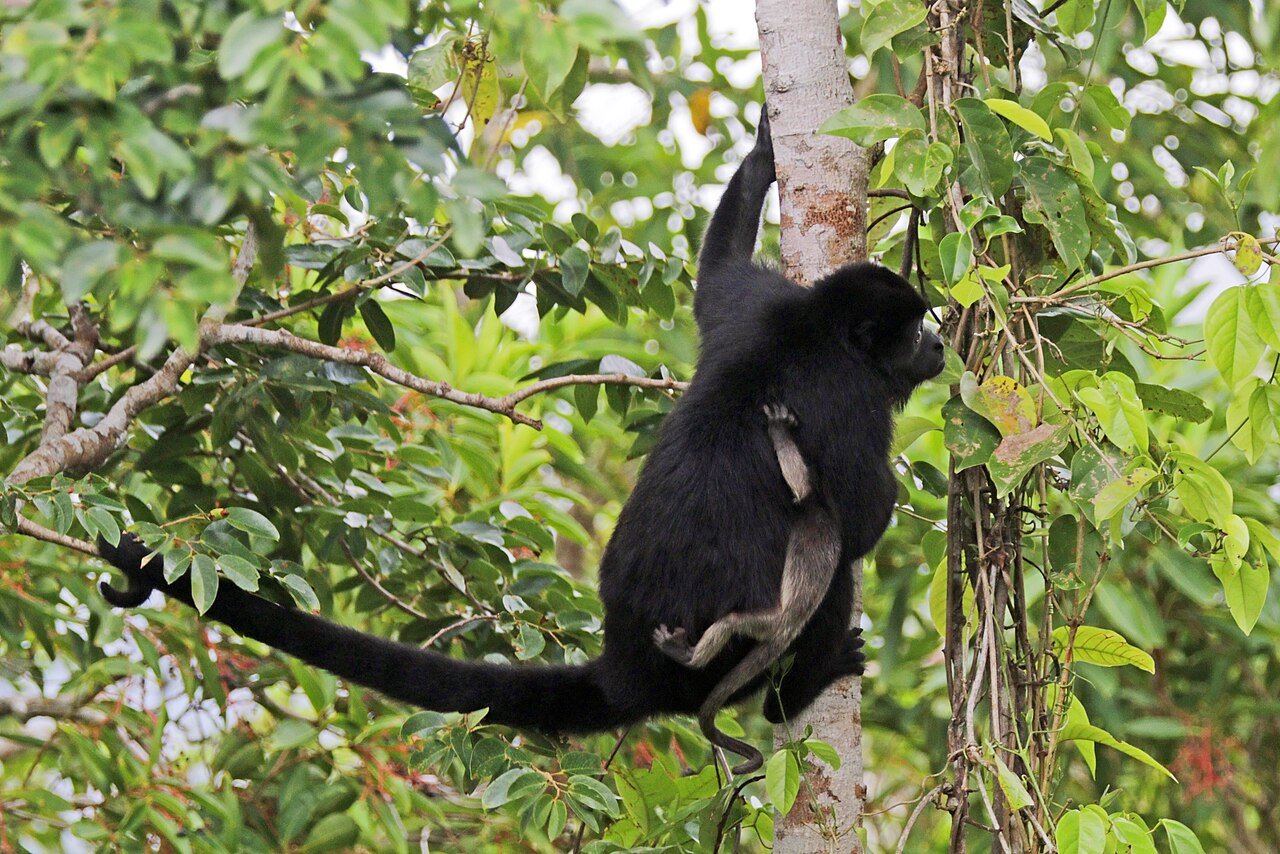
A VERY UNIQUE COSTA RICAN CREATURE
Visitors and tourists are intrigued by the daily Howler vocalizations – often comparing their sounds to that of ‘jungle monsters’. We see these critters as neighbors who live in harmony with each other and other monkey species around them. Hopefully you now know a bit more about our Mantled Howlers and can pass this knowledge to any newcomers who will surely ask about the strange roars coming from the forest!
Do you dream of living amongst the jungles, surrounded by amazing animals like our wake-up call Howler Monkeys? RE/MAX WE SELL PARADISE lists hundreds of tropical properties – homes, land, farms, estates & businesses – all within a stone’s throw of the amazing rainforests, mountains and beaches that make Costa Ballena a world-famous destination. See our wonderful & tropical property listings here.



